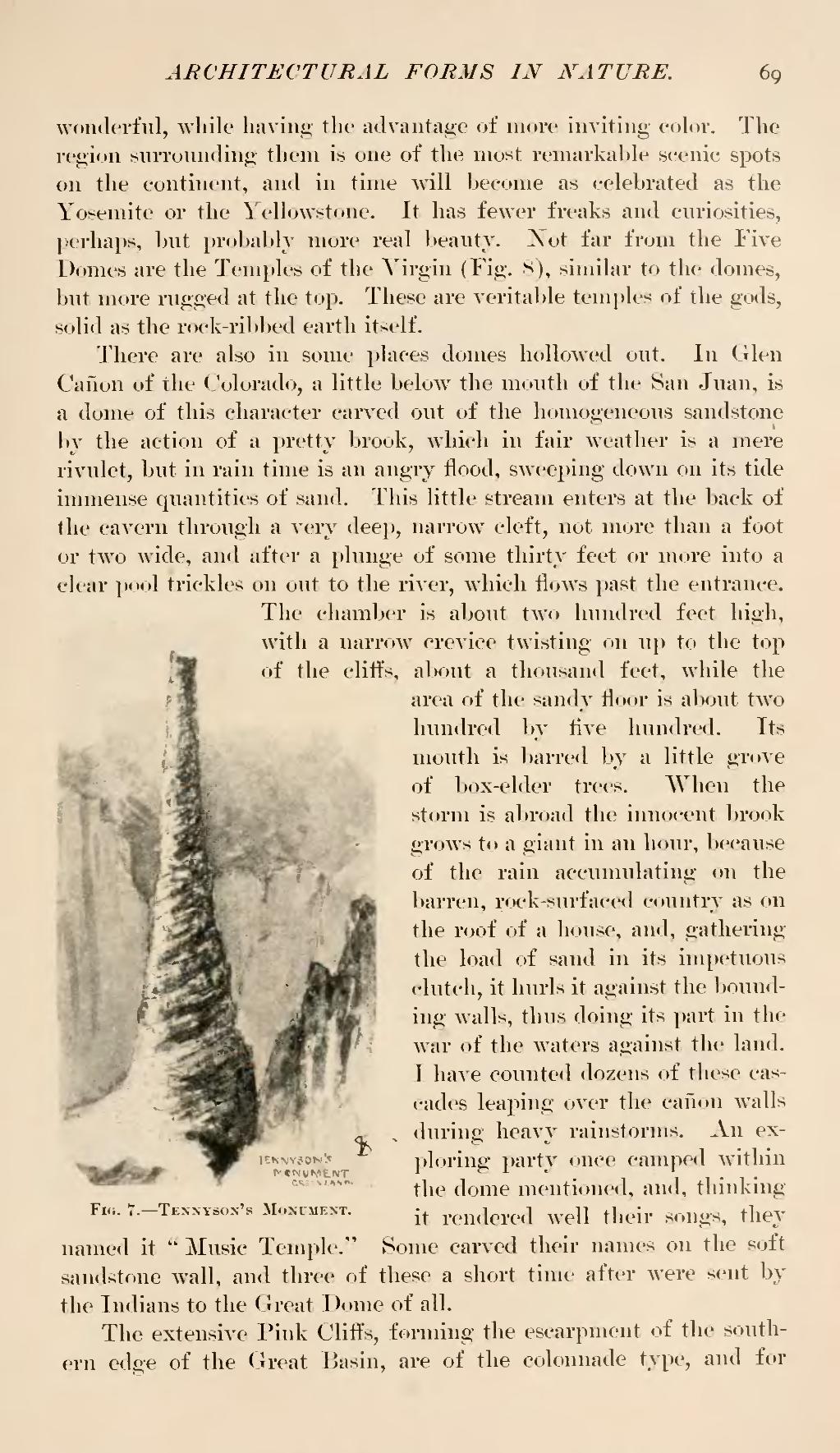wonderful, while having the advantage of more inviting color. The region surrounding them is one of the most remarkable scenic spots on the continent, and in time will become as celebrated as the Yosemite or the Yellowstone. It has fewer freaks and curiosities, perhaps, but probably more real beauty. Not far from the Five Domes are the Temples of the Virgin (Fig. 8), similar to the domes, but more rugged at the top. These are veritable temples of the gods, solid as the rock-ribbed earth itself.
There are also in some places domes hollowed out. In Glen Cañon of the Colorado, a little below the mouth of the San Juan, is a dome of this character carved out of the homogeneous sandstone by the action of a pretty brook, which in fair weather is a mere rivulet, but in rain time is an angry flood, sweeping down on its tide immense quantities of sand. This little stream enters at the back of the cavern through a very deep, narrow cleft, not more than a foot or two wide, and after a plunge of some thirty feet or more into a clear pool trickles on out to the river, which flows past the entrance. The chamber is about two hundred feet high, with a narrow crevice twisting on up to the top of the cliffs, about a thousand feet,  Fig. 7.—Tennyson's Monument. while the area of the sandy floor is about two hundred by five hundred. Its mouth is barred by a little grove of box-elder trees. When the storm is abroad the innocent brook grows to a giant in an hour, because of the rain accumulating on the barren, rock-surfaced country as on the roof of a house, and, gathering the load of sand in its impetuous clutch, it hurls it against the bounding walls, thus doing its part in the war of the waters against the land. I have counted dozens of these cascades leaping over the cañon walls during heavy rainstorms. An exploring party once camped within the dome mentioned, and, thinking it rendered well their songs, they named it "Music Temple." Some carved their names on the soft sandstone wall, and three of these a short time after were sent by the Indians to the Great Dome of all.
Fig. 7.—Tennyson's Monument. while the area of the sandy floor is about two hundred by five hundred. Its mouth is barred by a little grove of box-elder trees. When the storm is abroad the innocent brook grows to a giant in an hour, because of the rain accumulating on the barren, rock-surfaced country as on the roof of a house, and, gathering the load of sand in its impetuous clutch, it hurls it against the bounding walls, thus doing its part in the war of the waters against the land. I have counted dozens of these cascades leaping over the cañon walls during heavy rainstorms. An exploring party once camped within the dome mentioned, and, thinking it rendered well their songs, they named it "Music Temple." Some carved their names on the soft sandstone wall, and three of these a short time after were sent by the Indians to the Great Dome of all.
The extensive Pink Cliffs, forming the escarpment of the southern edge of the Great Basin, are of the colonnade type, and for
